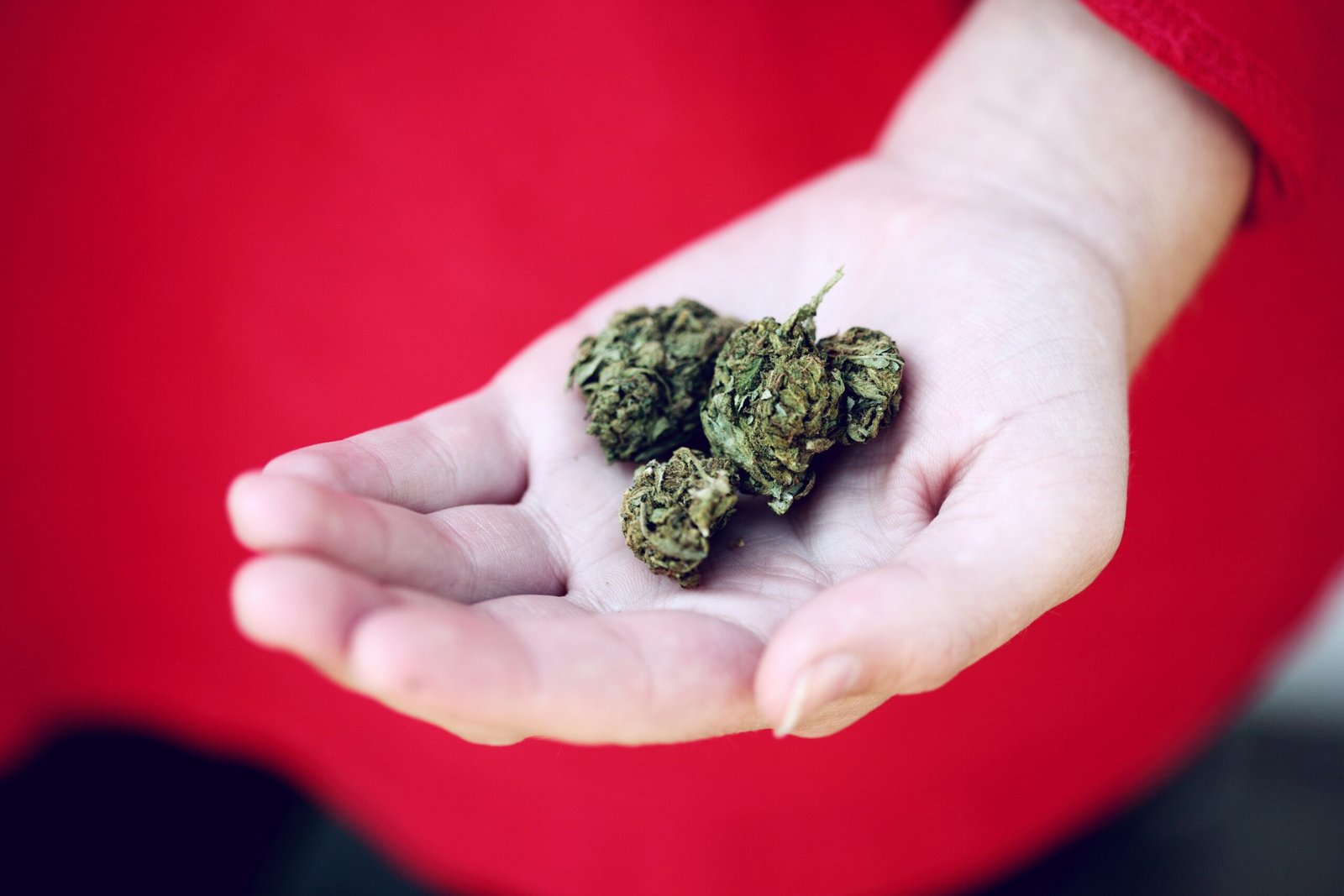Unveiling the Mysteries of Marijuana: Origins, Classification, Safety, and Usage

The Origins of Marijuana
Marijuana, scientifically known as Cannabis sativa, boasts a multifaceted history that traces back millennia, covering vast geographical landscapes and numerous ancient cultures. The lineage of marijuana starts in Central Asia, where archaeologists have discovered evidence of its use as early as 4000 BCE. Notably, the plant was initially utilized for its industrial hemp fibers in China, becoming an integral part of ancient Chinese culture and agricultural society. The Chinese pharmacopeia, one of the earliest known medical texts, documents the use of marijuana for treating a variety of ailments, underscoring its medicinal significance in one of the world’s oldest civilizations.
India, too, has a rich history with marijuana, where it is deeply woven into cultural, spiritual, and medicinal practices. Known locally as ‘bhang,’ marijuana features prominently in sacred Hindu texts, extolling its virtues as a holy plant offered to deities. Additionally, Ayurvedic medicine, an ancient Indian system of natural healing, employed marijuana for its therapeutic properties, addressing issues ranging from gastrointestinal problems to anxiety relief.
The Middle East also contributes to the rich tapestry of marijuana history, with traces of its use stretching back to ancient Persia. In this region, marijuana was not only used for physiological treatment but also within spiritual practices, as a tool for achieving mystical experiences and enhancing religious rituals. Notable historical records, such as those of the Assyrians, reveal its use in ceremonies dedicated to the goddess Ishtar, demonstrating the plant’s sacred status in early Middle Eastern societies.
As ancient civilizations evolved and interacted through trade and conquest, marijuana traversed continents, finding new applications and cultural significance. Its spread across Africa, Europe, and the Americas underscores its global impact, transitioning from ancient medicinal and spiritual uses to the contemporary recreational and therapeutic roles it serves today. Through the epochs, marijuana preserves its enigmatic allure, deeply rooted in its extensive and dynamic ancestral heritage.
Is Marijuana Considered a Narcotic?
To determine whether marijuana is considered a narcotic, it is essential to first understand the definition of a narcotic. The term “narcotic” is frequently used in a legal and medical context to refer to substances that dull the senses and can induce sleep. Typically, narcotics have a high potential for misuse and addiction. According to the U.S. Drug Enforcement Administration (DEA), narcotics are primarily substances derived from opium, such as morphine, heroin, and synthetic opioids like fentanyl.
In contrast, marijuana is derived from the Cannabis sativa plant and contains psychoactive compounds, the most notable of which is tetrahydrocannabinol (THC). While marijuana can alter the mind and has potential for dependence, its chemical structure and pharmacological effects are distinct from those of narcotics. Narcotics chiefly bind to opioid receptors in the brain, while THC interacts with cannabinoid receptors. This fundamental difference in interaction pathways is pivotal in understanding why marijuana is not classified alongside narcotics.
Moreover, the effects of marijuana on the body diverge significantly from those of narcotics. Narcotics often lead to respiratory depression and can be fatal in high doses, whereas marijuana is not typically associated with lethal overdoses. The predominant effects of marijuana include alterations in mood, perception, and cognitive function. Unlike narcotics, marijuana is rarely linked to severe physical withdrawal symptoms or high mortality rates.
From a legal standpoint, marijuana’s classification varies significantly across jurisdictions. In the United States, the federal government classifies marijuana as a Schedule I controlled substance, indicating a high potential for abuse and no accepted medical use. This places marijuana in a separate category from Schedule II narcotics like morphine and oxycodone, which have recognized medicinal value despite their potential for dependency and abuse. Various countries and states have chosen to decriminalize or legalize marijuana to differing extents, further illustrating its distinct legal treatment from narcotics.
In summary, marijuana is not classified as a narcotic due to its unique chemical structure, interaction with the body, and differentiated legal status. Authoritative sources such as medical journals and drug enforcement agencies emphasize these differences when discussing marijuana’s classification and its associated risks and benefits.
Assessing the Safety of Marijuana
The safety profile of marijuana has been a topic of extensive research and debate. In terms of short-term effects, marijuana is known to provide significant health benefits. Studies have indicated that it can effectively alleviate chronic pain, reduce anxiety, and address issues like nausea and vomiting, particularly in chemotherapy patients. Additionally, some findings suggest that marijuana has properties that might help with sleep disorders and certain mental health conditions.
However, these benefits must be weighed against potential risks. One of the primary concerns is the addiction potential associated with marijuana use. The National Institute on Drug Abuse indicates that around 9% of individuals who use marijuana may develop dependence. This figure increases for those who begin using it during adolescence or use it frequently.
Cognitive impairment is another significant risk linked to marijuana consumption. Research has shown that heavy and prolonged use, especially during adolescence, can lead to long-term deficits in memory, attention, and learning. Brain imaging studies suggest that these cognitive changes might be more pronounced in younger users, the brain being more susceptible to the influence of substances during developmental phases.
Moreover, respiratory issues have been flagged as a concern, particularly for those who smoke marijuana. Although marijuana smoke and tobacco smoke share many carcinogens, the association between marijuana smoking and lung cancer remains inconclusive. However, regular marijuana smokers may experience issues such as chronic bronchitis and respiratory infections.
Recent scientific studies continue to offer valuable insights into the multifaceted safety profile of marijuana. For instance, a 2021 report published in the Journal of the American Medical Association highlighted how marijuana use could exacerbate mental health issues like anxiety and depression in certain individuals. Meanwhile, expert opinions stress the importance of considering both individual health backgrounds and usage patterns when evaluating marijuana’s safety.
Classification: What Type of Drug is Marijuana?
Understanding the classification of marijuana requires an examination of its unique pharmacological properties, especially in relation to other major drug categories. Broadly speaking, drugs can be categorized into stimulants, depressants, hallucinogens, opioids, and cannabinoids. Among these, marijuana occupies a distinct position as it primarily belongs to the cannabinoid category.
The primary active compounds in marijuana are tetrahydrocannabinol (THC) and cannabidiol (CBD). THC is responsible for the psychoactive effects commonly associated with marijuana use, such as euphoria, altered perception of time, and heightened sensory perception. CBD, on the other hand, does not produce the same euphoric effects but is known for its potential therapeutic benefits, such as anti-inflammatory and anti-anxiety properties. These two compounds underscore the dichotomy within marijuana’s effects and its classification challenges.
Marijuana has traditionally been difficult to categorize neatly into a single drug type. It exhibits characteristics of several categories: the psychoactive effects of THC can produce stimulant-like properties such as increased heart rate, while also invoking depressant-like effects such as relaxation and anxiety reduction. Furthermore, its ability to alter perception and induce mild hallucinations places it within the scope of hallucinogens.
Moreover, the term “cannabinoid” precisely reflects the unique effects and chemical structure of marijuana’s active ingredients. Other drugs classified as cannabinoids include synthetic varieties such as K2 and Spice, which mimic some of the effects of marijuana’s natural compounds. Unlike other drug classes that have more consistent effects across their members, cannabinoids can vary widely, adding to the complexity of marijuana’s classification.
In essence, while marijuana is primarily classified as a cannabinoid due to its main active compounds, its diverse spectrum of effects across various psychophysiological domains makes it a multifaceted substance. Understanding this complexity is crucial for both its therapeutic applications and regulatory considerations.
Marijuana as a Psychoactive Substance
As a prominent psychoactive substance, marijuana has garnered significant attention for its effects on the brain and subsequent alteration of mood, perception, and cognitive functions. Central to its psychoactive properties is Delta-9-tetrahydrocannabinol, more commonly known as THC. This primary component interacts with the endocannabinoid system in the human brain, leading to various physical and psychological experiences.
Upon consumption, THC binds to cannabinoid receptors, predominantly in brain regions associated with pleasure, memory, thinking, concentration, movement, coordination, and sensory and time perception. These interactions stimulate the release of dopamine, a neurotransmitter linked to the brain’s reward system, resulting in a feeling of euphoria commonly known as a “high.” This psychoactive impact is profoundly dependent on the THC concentration, the route of administration, and the user’s individual biology and tolerance levels.
Moreover, marijuana’s psychoactive effects vary widely compared to other substances such as alcohol and psychedelics. While alcohol predominantly acts as a central nervous system depressant, leading to impaired cognitive and motor functions, THC often produces a more complex interplay of relaxation, altered sensory experiences, and enhanced creative thinking. Conversely, psychedelics like LSD cause more profound alterations in perception and thought processes, often accompanied by intense visual and auditory hallucinations, which are less commonly reported with marijuana use.
Human experiences with marijuana use offer insight into its psychoactive effects. Users frequently report a range of sensations, from heightened sensory awareness and altered time perception to a calming effect that aids in reducing anxiety and stress. Scientific understanding bolsters these anecdotal accounts, illustrating that THC’s interaction with the brain’s cannabinoid receptors not only affects mood and cognition but also has potential therapeutic implications for conditions such as chronic pain, epilepsy, and even certain mental health disorders.
Despite the subjective variability in user experiences, the scientific consensus acknowledges marijuana as a powerful psychoactive substance that exerts multifaceted effects on the human brain. This intricate complexity underlines the necessity for comprehensive research to further elucidate its diverse impacts and potential benefits.
Is Marijuana an Opiate?
In the realm of pharmacology, the term “opiate” specifically refers to natural or synthetic substances derived from the opium poppy (Papaver somniferum), including drugs such as morphine, codeine, and heroin. Opiates are primarily known for their potent analgesic properties and high potential for dependency and abuse. Marijuana, on the other hand, originates from the Cannabis sativa or Cannabis indica plant and significantly differs from opioids in origin, chemical composition, and physiological effects.
One of the principal distinctions between marijuana and opiates lies in their chemical structures and mechanisms of action. Opiates operate by binding to the opioid receptors in the brain and nervous system, leading to alterations in pain perception and often producing euphoria. This receptor binding is also responsible for the high addiction potential of these substances. Conversely, marijuana contains various cannabinoids, the most notable being tetrahydrocannabinol (THC), which interacts primarily with the endocannabinoid system. This system plays a role in regulating a variety of physiological processes, including appetite, mood, memory, and pain sensation.
While both marijuana and opiates can have analgesic effects, the pathways through which they exert these effects are distinct. The potential for overdose and fatal consequences associated with opiates is significantly higher than with marijuana. According to medical research, opioid overdose can lead to respiratory depression and death, a risk not observed with marijuana usage.
Medical literature further delineates the differences in dependence and withdrawal profiles. Opiates can induce severe physical dependence and challenging withdrawal symptoms, whereas marijuana dependence, when it occurs, tends to manifest more subtly with milder withdrawal experiences. Additionally, the potential medicinal benefits of marijuana are extensive, ranging from pain relief to amelioration of chemotherapy-induced nausea, as supported by numerous studies.
Addressing common misconceptions is crucial in understanding marijuana’s role and classification. It is essential to recognize that marijuana is not an opiate and does not share the same addictive and physiological profile. Awareness and education based on pharmacological evidence and medical insights can help dispel the myths surrounding marijuana and opiates, guiding informed decision-making in both clinical and personal contexts.
Marijuana and its Drug Status
Marijuana, derived from the Cannabis plant, is classified as a drug due to its distinctive chemical effects and psychoactive properties. The active compounds in marijuana, primarily delta-9-tetrahydrocannabinol (THC) and cannabidiol (CBD), interact with the brain’s endocannabinoid system, leading to alterations in mood, perception, and cognition. THC is chiefly responsible for the ‘high’ associated with marijuana use, a change in mental state that underscores its drug classification.
A common myth surrounding marijuana is that it is harmless and should not be considered a drug. However, the definition of a drug is any chemical substance that alters normal bodily function when absorbed into the body. Marijuana fits this classification squarely due to its impact on the central nervous system and the resultant psychoactive effects. These effects can include euphoria, relaxation, altered sensory perception, and impaired motor skills, emphasizing the substance’s capability to influence mental and physical health.
The classification of marijuana as a drug has significant implications for law enforcement and medicine, as well as for societal perception. Legally, many jurisdictions categorize marijuana alongside other controlled substances, warranting regulatory oversight and potential criminal penalties for illicit use. This status influences law enforcement priorities and the judicial system’s approach to marijuana-related offenses.
In the medical realm, marijuana’s drug status has led to ongoing research into its therapeutic potential and risks. Marijuana is recognized for its medicinal properties, including pain relief and appetite stimulation, particularly for patients with chronic conditions, such as cancer or epilepsy. Nonetheless, its psychoactive properties necessitate careful consideration and regulation to ensure patient safety and efficacy of use.
Societal perception of marijuana is evolving, influenced by contemporary debates around legalization and decriminalization. Understanding marijuana as a drug fosters informed discussions about its use, potential benefits, and associated risks. In addressing these aspects, it is crucial to base societal decisions on scientific evidence and medical expertise, ensuring that public policy reflects a balanced view of marijuana’s impact on health and society.
THC in Marijuana Leaves
The primary psychoactive compound in marijuana, THC (tetrahydrocannabinol), plays a critical role in the plant’s effects and overall usage. THC is primarily produced in the glandular trichomes, tiny hair-like structures on the surface of the marijuana leaves and flowering buds. These trichomes are dense with resin, a sticky substance rich in cannabinoids, and it is within this resin that THC is most concentrated.
Botanical studies indicate that THC is synthesized through a complex biochemical process involving enzymes such as THCA synthase. This enzyme facilitates the conversion of cannabigerolic acid (CBGA) into tetrahydrocannabinolic acid (THCA), the precursor to THC. Upon exposure to heat or light, a process known as decarboxylation transforms THCA into THC, the compound responsible for marijuana’s mind-altering effects.
It is important to note that not all parts of the marijuana plant contain equal concentrations of THC. The flowering buds, particularly those of female plants, are the most potent, housing the highest levels of trichomes. Leaves, stems, and seeds, by comparison, contain significantly lower concentrations of THC. This distribution of THC impacts the potency and thus the effectiveness of various marijuana products. For instance, products derived from the flower buds, such as certain edibles and oils, tend to be more potent compared to those made from leaves or stems.
Chemical analyses of marijuana have consistently shown a correlation between the density of trichomes and the overall THC content. This correlation underscores the importance of proper cultivation and harvesting practices to maximize THC yield. Moreover, understanding where THC is most concentrated helps users and manufacturers tailor products to achieve desired effects, whether for medicinal or recreational purposes.
The significance of THC in marijuana underscores its central role in both the plant’s natural lifecycle and its applications. As research continues to evolve, the intricate relationship between THC production and the plant’s anatomy becomes increasingly evident, paving the way for innovative and more effective marijuana products.
Methods of Using Marijuana
There are several methods through which individuals consume marijuana, each offering unique experiences and effects. These methods include smoking, vaping, edibles, tinctures, and topicals, each with distinct onset times and health implications. Understanding these methods can help users make informed decisions based on their needs and preferences.
Smoking: Perhaps the most traditional method, smoking involves inhaling the smoke from burning marijuana flowers. It provides a rapid onset of effects, usually within minutes, and is often preferred for its immediacy. However, it carries health risks associated with inhaling combusted plant material, such as respiratory issues. This method is still prevalent, especially among older users accustomed to its ritualistic aspect.
Vaping: Vaping has gained popularity as a presumably healthier alternative to smoking. It involves inhaling vaporized marijuana concentrates or flowers. The onset is nearly as fast as smoking, typically taking effect within minutes. Vaping reduces exposure to harmful by-products of combustion, but concerns about the long-term effects of inhaling vaporized substances linger. Depending on the device and concentrate quality, efficiency can vary.
Edibles: Edibles include any food or drink infused with marijuana. Their effects take longer to onset, usually between 30 minutes to two hours, as the marijuana must be metabolized by the liver. This delayed reaction can often lead to overconsumption by inexperienced users. However, edibles provide a discreet and smoke-free option, with effects lasting significantly longer than inhalation methods. Portion control and understanding dosage are critical to avoid adverse experiences.
Tinctures: Tinctures are alcohol-based marijuana extracts taken sublingually (under the tongue) or mixed with food/drink. When taken sublingually, effects can be felt within 15 to 45 minutes. Tinctures offer a controlled dosage, making them suitable for medical use. They are discreet and have a longer shelf life than some other forms.
Topicals: Topicals include lotions, balms, and oils applied directly to the skin. They are primarily used for localized pain relief and inflammation without producing psychoactive effects. Onset time can vary but generally occurs within 15 to 30 minutes. Topicals offer a practical application method, particularly beneficial for individuals seeking therapeutic benefits without the high associated with other methods.
Trends in marijuana consumption are evolving, with a noticeable shift towards healthier and more discreet usage methods. The choice of method depends on individual health considerations, desired effects, and lifestyle preferences, highlighting the importance of understanding each method’s nuances.




